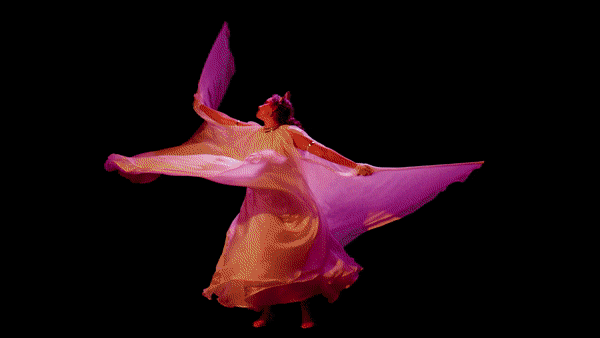Laser Projectors Engage Viewers with 240,000 Lumens of Theatrical Storytelling
Permanent architectural projection system lights up an Indiana Center for Performing Arts with Epson laser projectors.

Blockhouse Studios leveraged 12 Epson EB-PU2220B 20,000-lumen large venue laser projectors as part of a permanent projection mapping display system to light up the Carter Green Palladium in Carmel, IN. Epson projection technology was chosen to immerse the audience in the story of the three children of Titan—Selene, Eos, and Helios—and light up the 151,000-square-foot Palladium with 240,000 lumens of brightness from the Epson projectors.
The first projection-mapped art installation, "EOS: The First Dawn," launched on Aug. 31, taking visitors through a serene and compelling visual experience via projection mapping and illuminated effects. Inspired by the classical temple architecture of the ancient Greeks and Romans, Blockhouse Studios embraced the Palladium’s foundational influence for “EOS: The First Dawn,” keeping it at the forefront of design when combining inspiration from centuries-old architecture with a modern projection experience.
[Show Me the Monet: My Daughter and Her Friends Loved This Immersive Adventure]
“So much goes on behind the scenes for a project like this, from concept and design to animation and post-production, to actual onsite mapping and rigging of the projectors,” said Kevin Winkler, owner, Blockhouse Studios. “In addition to all of our hard work, it required technology that could reproduce the content how we intended it to be viewed. With bright colors and sharp details to ensure the building’s architecture was highlighted, a story was told, and viewers were engaged on many levels. We wanted that ‘wow factor’ and the Epson projectors delivered at this massive scale.”
In late 2022, the city of Carmel and the Carmel Redevelopment Commission (CRC) approached Blockhouse Studios to create a permanent viewing system for architectural cinema at the Carter Green Palladium, a 1,500-seat concert hall and home of the Center for the Performing Arts. A custom-made, audiovisual system, built and named by Blockhouse Studios, the “Palladiscope” needed projectors that could deliver an immense amount of brightness with vibrant colors and the ability to withstand extreme weather conditions.

The Palladiscope was built to take traditional content viewing beyond a screen and onto the physical architecture of the Palladium. “As a permanent install, we knew we needed to approach the system design in a different way than other outdoor architectural projection projects, which are almost always temporary installations," Winkler further explained. "To that end we developed the Palladiscope system to interface seamlessly with the existing control systems, including lighting, scheduling, audio, and more. And to ensure the system was robust and easily serviceability, we consciously avoided custom software and hardware.”
[9 Large-Venue Projectors and Key Features Experts Recommend as Live Events Return]
A daily selection of features, industry news, and analysis for AV/IT professionals. Sign up below.
The projector content is controlled by Mad Mapper software and each projector is mounted in a Tempest Cyclone enclosure. Designed for large format video projectors delivering between 20,000 to 50,000 lumens, in virtually any climate type, the state-of-the-art Tempest Cyclone enclosures are engineered to ensure the projectors always operate at peak performance. The Tempest Cyclone enclosures are installed on the roofs of the James and Tarkington buildings, adjacent to the Palladium, along with a custom-designed technology room that houses the server that controls and sends the video content to the projectors.
“The amount of time, talent and effort that went into this project is remarkable,” said Ramzi Shakra, senior product manager, Epson America. “On a much smaller scale, Blockhouse Studios built a 3D printed model of the Palladium for Epson’s InfoComm 2023 booth, projection mapping behind-the-scenes footage onto it. Now, to see it in real life at its actual massive scale—it is nothing short of amazing and we are thrilled to be part of it.”
The AVNetwork staff are storytellers focused on the professional audiovisual and technology industry. Their mission is to keep readers up-to-date on the latest AV/IT industry and product news, emerging trends, and inspiring installations.
